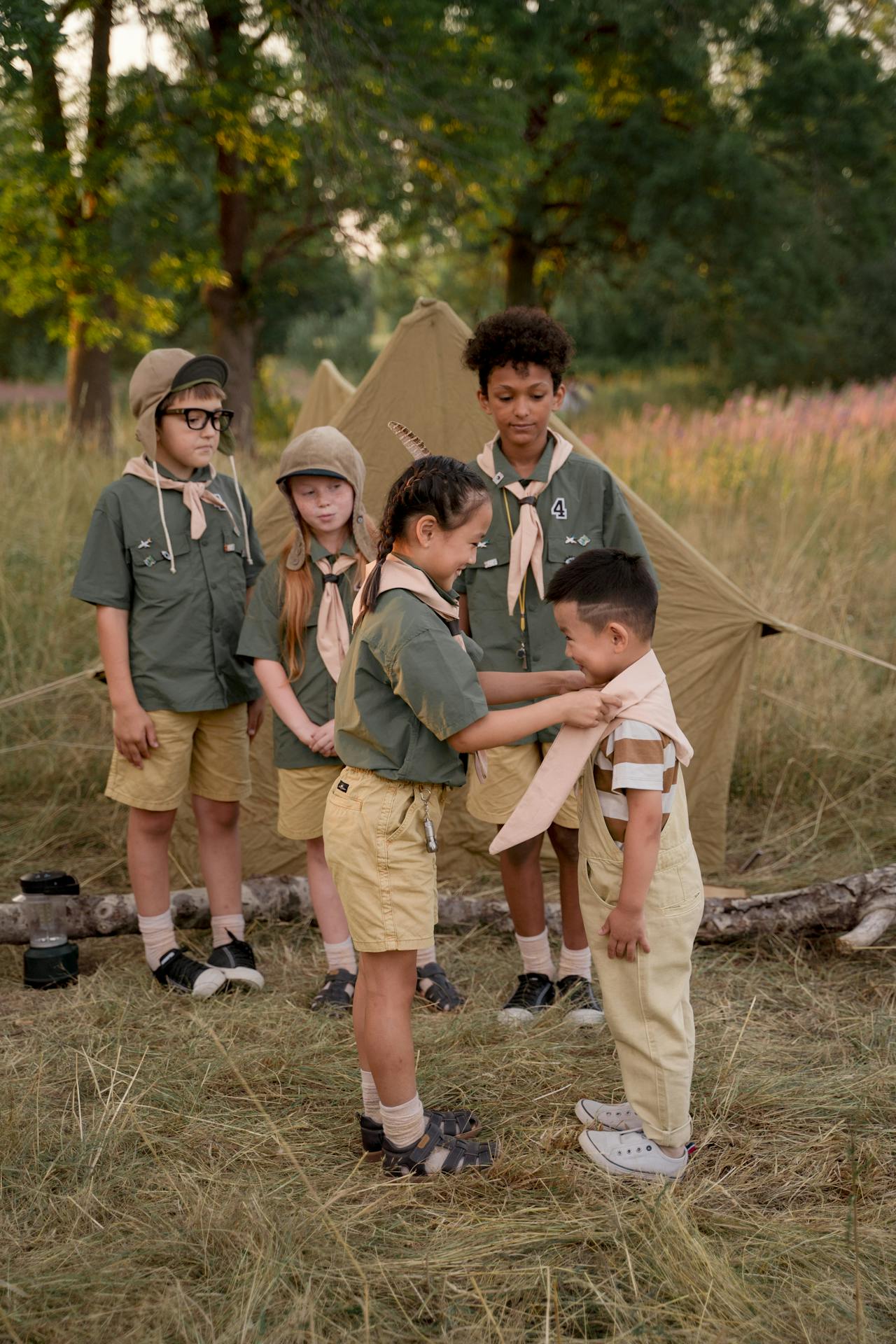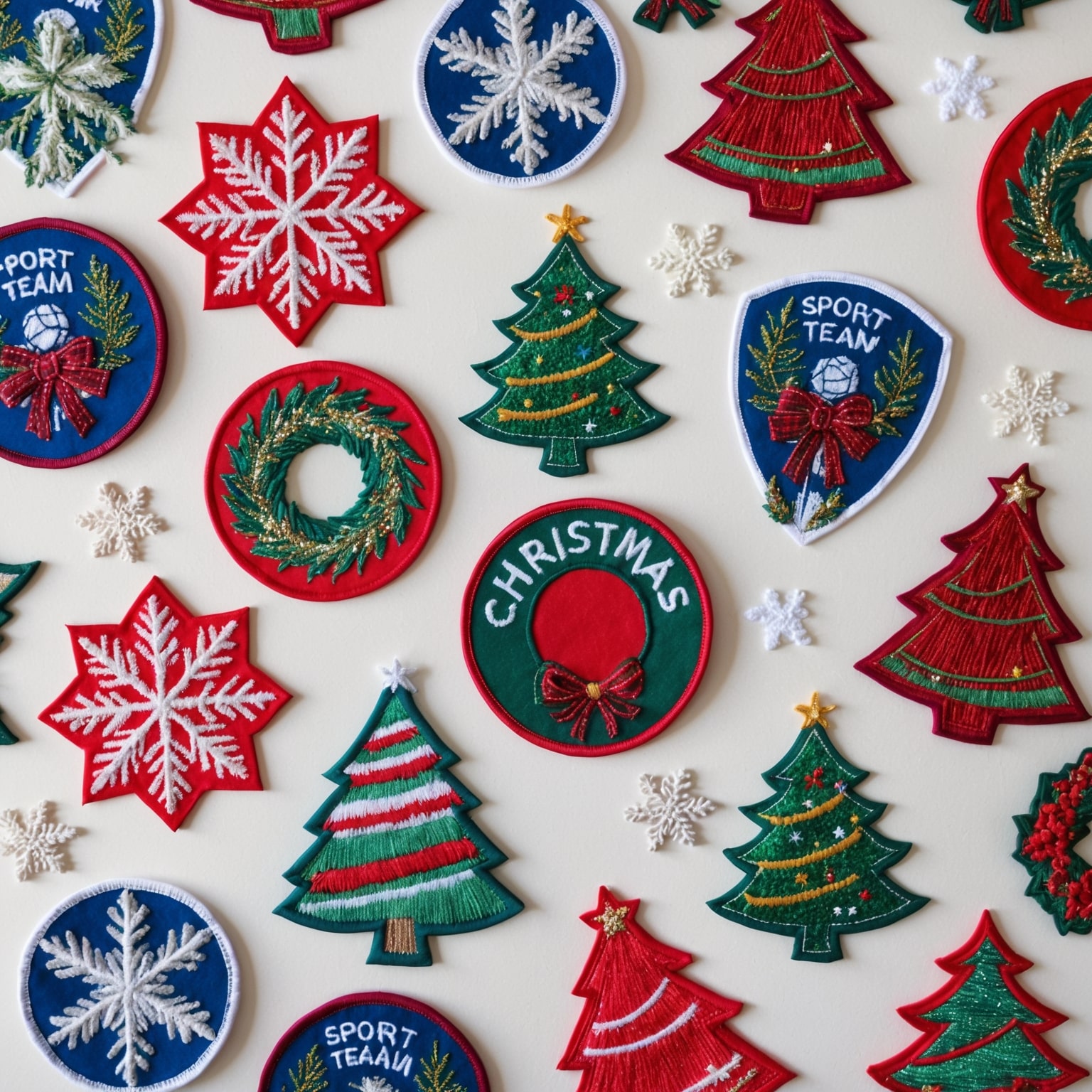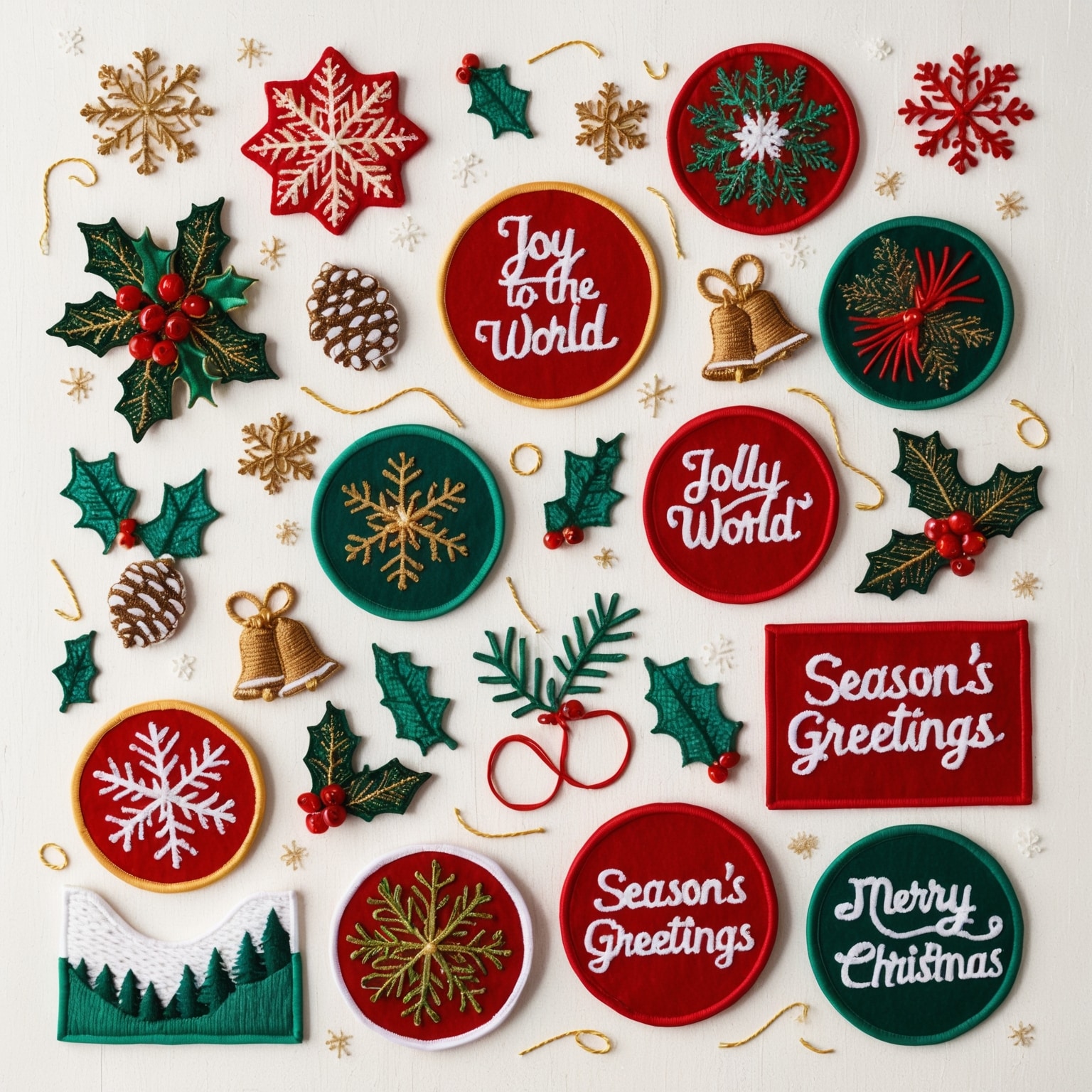The Fascination with Scout Patch Collecting
Scout patch collecting is a beloved hobby that combines the thrill of treasure hunting with the joy of preserving history. Whether you’re a current scout, a former scout, or simply an enthusiast, collecting scout patches offers a unique way to connect with scouting heritage and build a collection of meaningful and visually striking memorabilia. This guide will provide essential tips and tricks for beginners, helping you start and grow your scout patch collection with confidence.
1. Understanding the Appeal of Scout Patch Collecting
Connecting with Scouting History
Scout patches tell the stories of scouting adventures, achievements, and milestones. Each patch represents a piece of scouting history, making the collection a journey through time.
Example: A patch commemorating the 100th anniversary of the Boy Scouts of America serves as a historical marker, celebrating a century of scouting.
Building a Sense of Community
Collecting scout patches fosters a sense of community among collectors and scouts. Trading patches with others allows you to connect with people who share your passion for scouting.
Example: Attending a scouting jamboree and trading patches with fellow scouts creates lasting friendships and expands your collection.
The Joy of the Hunt
The thrill of finding rare and unique patches adds excitement to the hobby. Whether you’re searching through flea markets, attending patch trading events, or browsing online, the hunt is a significant part of the appeal.
Example: Discovering a rare council patch from the 1950s at a local antique shop can be a thrilling experience for a collector.
2. Getting Started with Scout Patch Collecting
Defining Your Focus
Before you start collecting, decide on a specific focus or theme for your collection. This could be based on a particular scouting organization, region, event, or type of patch.
Tips:
- Organization: Collect patches from a specific scouting organization, such as the Boy Scouts of America or Girl Scouts.
- Region: Focus on patches from a particular council or geographic area.
- Events: Collect patches from significant scouting events like jamborees, camporees, or national gatherings.
- Types: Specialize in a particular type of patch, such as merit badges, rank patches, or commemorative patches.
Example: A collector decides to focus on patches from World Scout Jamborees, creating a thematic collection that spans different countries and years.
Building Your Collection
Start building your collection by acquiring patches through various sources. You can find patches at scouting events, online marketplaces, flea markets, and through trades with other collectors.
Tips:
- Events: Attend scouting events and trading fairs to find patches and meet fellow collectors.
- Online Marketplaces: Use platforms like eBay, Etsy, and specialized scouting forums to buy and trade patches.
- Flea Markets and Antique Shops: Explore local flea markets and antique shops for hidden treasures.
- Networking: Connect with other collectors and scouts to arrange trades and expand your collection.
Example: A beginner collector attends a local scouting event and trades patches with other attendees, acquiring several new additions for their collection.
3. Identifying and Authenticating Scout Patches
Understanding Patch Types
Familiarize yourself with the different types of scout patches, including merit badges, rank patches, council patches, event patches, and commemorative patches. Each type has its own unique characteristics and significance.
Example: Merit badges represent specific skills and achievements, while event patches commemorate participation in specific scouting events.
Recognizing Authentic Patches
Authenticating patches is crucial to ensure you are collecting genuine items. Look for details such as the quality of embroidery, stitching patterns, and the presence of official logos or insignias.
Tips:
- Quality: Authentic patches often have higher-quality embroidery and precise stitching.
- Logos and Insignias: Look for official logos, council names, and other identifying marks.
- Backing: Check the backing material; genuine patches may have specific types of backing, such as plastic or heat-sealed backing.
Example: A collector examines a patch for the Boy Scouts of America logo and checks the quality of the stitching to authenticate it.
Avoiding Counterfeits
Be aware of counterfeit patches, especially when purchasing online. Counterfeit patches may have lower-quality embroidery, incorrect colors, or missing details.
Tips:
- Research: Research common counterfeits and familiarize yourself with the characteristics of authentic patches.
- Seller Reputation: Buy from reputable sellers with positive feedback and reviews.
- Comparisons: Compare suspected counterfeit patches with known authentic examples to spot discrepancies.
Example: A collector uses online resources to research common counterfeit patches and learns to identify key differences between authentic and fake patches.
4. Preserving and Displaying Your Collection
Proper Storage Techniques
Proper storage is essential to preserve the condition of your scout patches. Use appropriate materials and techniques to protect your collection from damage.
Tips:
- Acid-Free Materials: Store patches in acid-free plastic sleeves or albums to prevent discoloration and deterioration.
- Climate Control: Keep patches in a cool, dry environment to avoid moisture and heat damage.
- Handling: Handle patches with clean hands or wear gloves to prevent oils and dirt from transferring to the fabric.
Example: A collector stores their patches in an acid-free album, keeping them safe from dust and moisture.
Creative Display Ideas
Displaying your scout patch collection allows you to showcase your achievements and enjoy your collection visually. Consider creative and attractive ways to display your patches.
Tips:
- Frames: Frame patches in shadow boxes or display cases for a polished look.
- Banners: Sew patches onto fabric banners or blankets for a traditional display.
- Pinboards: Use pinboards or corkboards to create an interchangeable display that allows you to rearrange patches easily.
Example: A collector creates a large banner with patches sewn onto it, displaying it prominently in their home.
Regular Maintenance
Regular maintenance is important to keep your collection in top condition. Inspect patches periodically and address any issues promptly.
Tips:
- Cleaning: Gently clean patches with a soft brush to remove dust and dirt.
- Repairs: Repair any loose threads or minor damage to prevent further deterioration.
- Inventory: Keep an inventory of your collection to track new additions and identify missing or desired patches.
Example: A collector regularly inspects their patches for signs of wear and carefully repairs any loose threads.
5. Expanding Your Knowledge and Network
Joining Collecting Communities
Joining scout patch collecting communities can enhance your knowledge and provide valuable connections with other collectors. Participate in forums, social media groups, and local clubs.
Tips:
- Forums: Join online forums dedicated to scout patch collecting to share information and seek advice.
- Social Media: Participate in social media groups on platforms like Facebook and Instagram to connect with other collectors.
- Clubs: Join local or national collecting clubs to attend meetings, events, and trade fairs.
Example: A collector joins an online forum for scout patch enthusiasts, where they share their collection and learn from more experienced collectors.
Attending Events and Conventions
Attending scout patch collecting events and conventions is a great way to find rare patches, meet fellow collectors, and learn from experts in the field.
Tips:
- Scout Shows: Attend scout shows and jamborees where trading and selling patches are common.
- Conventions: Participate in patch collecting conventions to discover unique items and expand your network.
- Workshops: Attend workshops and seminars to learn more about patch collecting techniques and history.
Example: A collector attends a national scouting convention and discovers several rare patches to add to their collection while networking with other enthusiasts.
6. Understanding the Value of Scout Patches
Factors Affecting Value
Several factors affect the value of scout patches, including rarity, condition, age, and historical significance. Understanding these factors can help you assess the value of your collection.
Tips:
- Rarity: Rare patches, especially limited editions or those from disbanded councils, tend to have higher value.
- Condition: Patches in excellent condition with no damage or discoloration are more valuable.
- Age: Older patches, particularly those from significant historical events, can be highly sought after.
- Significance: Patches with historical significance or unique features can command higher prices.
Example: A patch from the first World Scout Jamboree in 1920 is highly valuable due to its historical significance and rarity.
Buying and Selling Patches
When buying or selling scout patches, it’s important to understand market trends and pricing. Research and stay informed about current values to make informed decisions.
Tips:
- Research: Use online resources, price guides, and auction results to research current values.
- Trustworthy Sources: Buy from reputable sellers and dealers to ensure authenticity and fair pricing.
- Fair Pricing: When selling, set fair prices based on research and market trends.
Example: A collector uses online price guides to determine the fair value of a rare patch before purchasing it from an online marketplace.
7. Ethical Considerations in Scout Patch Collecting
Respecting Scouting Values
Scout patch collecting should be conducted with respect for scouting values and principles. Ensure that your collecting practices align with the ethics and spirit of scouting.
Tips:
- Honesty: Be honest in your transactions, whether buying, selling, or trading patches.
- Respect: Respect the history and significance of the patches you collect, understanding their cultural and historical context.
- Preservation: Aim to preserve the integrity of the patches and avoid practices that could damage or devalue them.
Example: A collector ensures that all their transactions are transparent and fair, reflecting the scouting values of honesty and integrity.
Supporting Scouting Programs
Whenever possible, support scouting programs and initiatives through your collecting activities. Purchase patches from official sources or contribute to scouting-related causes.
Tips:
- Official Sources: Buy patches from official scouting organizations to support their programs and activities.
- Donations: Consider donating a portion of your sales or collection to scouting programs or charities.
- Volunteering: Volunteer your time and expertise to help scout groups with patch-related activities and events.
Example: A collector donates a portion of their patch sales to a local scouting council, supporting their programs and activities.
8. Embracing the Journey
Enjoying the Hobby
Above all, enjoy the journey of scout patch collecting. Embrace the excitement of the hunt, the joy of discovering new patches, and the connections you make along the way.
Tips:
- Passion: Let your passion for scouting and collecting drive your hobby.
- Curiosity: Stay curious and open to learning about new patches and their histories.
- Community: Engage with the scouting and collecting community to enrich your experience.
Example: A collector shares their passion for scout patch collecting with friends and family, inspiring others to join the hobby and create their own collections.
The Adventure of Scout Patch Collecting
Scout patch collecting is a rewarding and enriching hobby that offers a deep connection to scouting history, community, and tradition. By following these essential tips and tricks, beginners can start and grow their collections with confidence and enthusiasm. From understanding the types and significance of patches to preserving and displaying your collection, each step of the journey brings new opportunities for discovery and enjoyment.
Embrace the adventure of scout patch collecting, and let each patch you acquire tell its own unique story. As you build your collection, you’ll not only preserve a piece of scouting heritage but also create lasting memories and connections within the scouting community.
If you are interested in purchasing high-quality custom patches, feel free to call us at 1-877-503-8485 or fill out one of our FREE quotes here.




